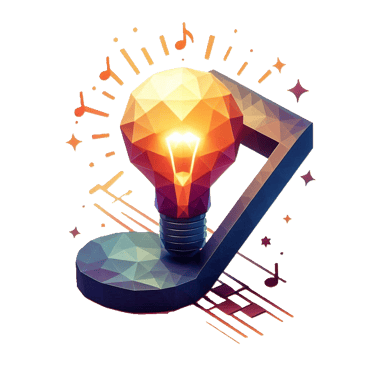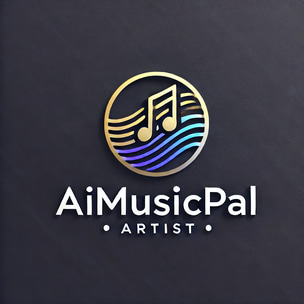How to Start Producing Your First AI Music Song
Curious about creating music with AI? This beginner’s guide walks you through the process of producing your own AI-generated song—from brainstorming an idea to crafting prompts, refining sounds, and adding your personal touch. Perfect for anyone eager to explore the world of AI music!
9/11/20244 min read


Creating music with AI is a little like working with a creative partner who knows music inside and out but takes cues from you. If you’re ready to dive into the world of AI-generated music, this guide will take you through the steps—from having an idea to crafting prompts and creating your final track. No advanced music skills are needed, just a bit of imagination and a willingness to explore!
Step 1: Start with an Idea or Theme
Every great song begins with an idea. Start by thinking about what you want your music to communicate. Do you have a mood in mind, like calm, upbeat, or dreamy? Maybe you’re envisioning a particular genre, like electronic, pop, or lo-fi? Or, perhaps you want the song to have a cinematic feel, like something you’d hear in a movie. This initial idea will guide everything you do next.
Mood: Decide if your song should feel joyful, intense, chill, or emotional.
Genre: Narrowing down a genre can help guide the sound. Think along the lines of jazz, classical, ambient, or dance.
Purpose: Is this track for background music, a podcast intro, or purely for enjoyment? Knowing this can help you shape the structure of the song.
Step 2: Shape Your Idea with Prompts
Now that you have a theme, it’s time to bring it to life with AI. The way you describe your song to the AI, often called “prompting,” helps the AI understand what you’re aiming for. Prompts are short descriptions or instructions you give the AI to influence what it creates.
To write a strong prompt, try including:
Emotion: Use descriptive words that convey feelings like “peaceful,” “uplifting,” or “melancholic.”
Instrumentation: Suggest instruments you’d like to hear, such as “acoustic guitar,” “synth bass,” or “soft piano.”
Structure: Think about if you want a clear verse and chorus structure or something more ambient and flowing.
For example, if your idea is a dreamy electronic track, you could prompt the AI with something like:
“Create a relaxed electronic track with soft synths and a warm, gentle beat. Aim for a nostalgic, late-night vibe with soothing piano melodies.”
The more detail you add, the more the AI can shape your song to fit your vision. Don’t worry if it’s not perfect the first time—prompting often takes a bit of trial and error to get just right!
Step 3: Generate, Listen, and Refine
Once your prompt is ready, it’s time for the AI to work its magic! The AI will produce a sample based on your input, and you can listen to see if it aligns with your idea.
This is where the refining process begins. Often, your first try will be close but not exactly what you want. Take note of what you like and don’t like. Maybe the tempo is a bit too fast, or you want a softer drum beat. Go back to your prompt and tweak it based on your preferences. For instance, you might update your prompt to say:
“Reduce tempo slightly and add a more pronounced bass line with gentle percussion for a chill, late-night vibe.”
Repeat this process a few times, adjusting your prompt each time to get closer to your ideal sound. Some platforms even let you select from multiple versions of a track so you can pick one that best fits your style.
Step 4: Customize with Fine-Tuning Options
Many AI music tools offer extra customization settings that let you adjust elements of the music without changing your prompt. This could include options like:
Tempo Adjustment: Slowing down or speeding up the track to match the desired energy level.
Volume Balancing: Emphasizing or reducing certain instruments, like making the vocals softer or the drums more pronounced.
Looping: Extending or shortening parts of the track for a better flow.
These little adjustments can make a big difference, helping you fine-tune the track to exactly what you have in mind.
Step 5: Add a Personal Touch in a DAW (Optional)
While the AI does most of the work, adding a personal touch in a digital audio workstation (DAW) can elevate your track even more. If you’re comfortable with basic editing, try importing the AI-generated track into a DAW like GarageBand, Ableton, or Logic Pro.
Here, you can:
Arrange Sections: Reorder verses, add intros or outros, and structure the song to feel more natural.
Add Layers: Incorporate extra sounds or effects, like reverb, delay, or vocal samples, to give the track depth.
Mix and Balance: Adjust volume levels, add fade-ins or fade-outs, and make other minor tweaks for a polished sound.
Step 6: Finalize and Share Your Song
After fine-tuning, give your track one last listen. If it’s the vibe you were aiming for, export it as an audio file—typically as MP3 or WAV. You’ve officially created your own AI music song!
Sharing your music is the final, exciting step. Upload it to a platform where others can hear it, whether it’s a social media post, a background track for a YouTube video, or even a personal playlist. Sharing allows you to get feedback and maybe even inspire others to explore AI music.
Wrapping It All Up
Producing music with AI can feel like a blend of art and discovery. From an initial idea to refining prompts and tweaking sounds, it’s a creative journey where technology meets your vision. So grab a prompt, dive in, and let the AI help bring your musical ideas to life.
